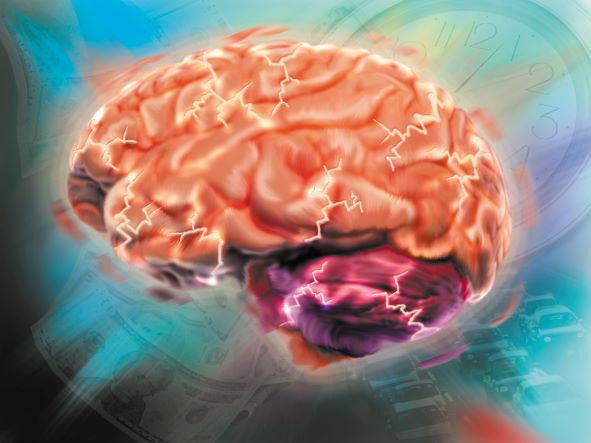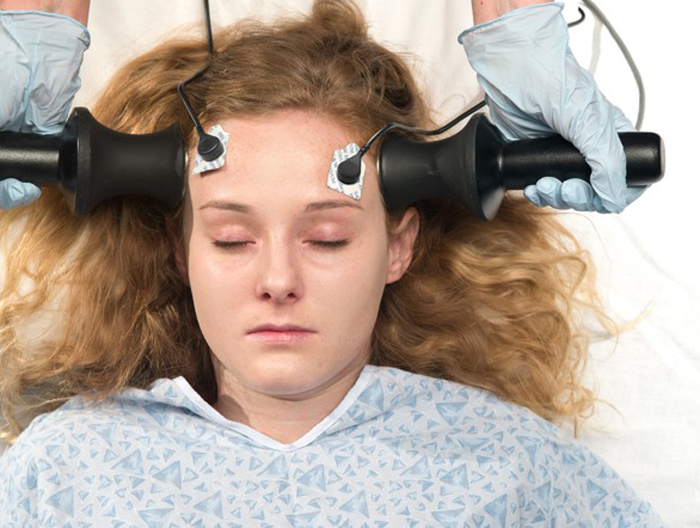Researchers call for action after finding 17% of patients with certain characteristics die from suicide within two years of receiving ECT.
Electroshock may be advised for deeply depressed psychiatric patients who have not responded to other treatment, but a new study found that after the procedure, the risk of suicide remains high and is significantly increased in some suicidal patients.
Danish researchers analyzed medical records and found that patients who received electroconvulsive therapy (ECT), also referred to as electroshock, were still 44 times more likely to die from suicide during the two years after treatment than individuals matched by age and sex in the general population.

Though researchers speculated this was probably due to the severity of the mental health conditions of the patients receiving ECT, the fact remains that the risk of suicide remained highly elevated after a procedure that patients may have thought would eliminate or greatly reduce their higher risk.
Patients who received ECT were also more than twice as likely to die from any cause than those who did not get the procedure.
Among patients receiving ECT, those patients with a history of intentional self-harm or suicide attempt before receiving ECT were still at a four times greater risk of suicide after ECT than those with no such history.
A significantly higher risk for suicide after ECT was associated with individuals with certain characteristics, with one in six of such individuals committing suicide in the two years after receiving ECT.
“Notably, among male patients aged 50-69 years, having depression as the diagnostic indication for ECT, with medium- or long-term higher education, and a history of substance use disorder, as well as intentional self-harm/suicide attempt, 17% died from suicide in the 2 years following ECT,” wrote the study’s lead author, Anders Spanggård, in Acta Psychiatrica Scandinavica.
“It is rare to see suicide rates of that magnitude in the literature – and these findings obviously call for action,” he added.
[After electroshock] It is rare to see suicide rates of that magnitude in the literature – and these findings obviously call for action. ”
— Anders Spanggård, Aarhus University Hospital Psychiatry, Denmark
Psychiatrists still do not know how ECT is supposed to “work,” how much voltage it will take, or how many sessions of ECT to administer. It is a matter of trial and error with human lives.
For all the brain damage and risk of other injury from electroshock, the procedure has never even been proven effective in clinical trials.
John Read, Ph.D., a professor of psychology, Irving Kirsch, Ph.D., associate director of the Program in Placebo Studies at Harvard Medical School, and psychologist Laura McGrath, Ph.D., reviewed ECT studies and published their findings in 2020 in Ethical Human Psychology and Psychiatry.
“There is no evidence that ECT is effective for its target demographic – older women, or its target diagnostic group – severely depressed people, or for suicidal people, people who have unsuccessfully tried other treatments first, involuntary patients, or adolescents,” they concluded.
Read summarized this lack of proof of efficacy, stating there have only been 11 placebo-controlled studies of ECT: four found short-term benefit to some patients, five found no difference at the end of treatment between those who received ECT and those who did not, and two had mixed results, including one where psychiatrists reported a benefit, but nurses and patients did not.

However, all of the studies had very small sample sizes and serious flaws in methodology, according to Read. He found that even the short-term benefit reported by some patients was not due to the ECT, but was primarily a placebo effect.
Most importantly, none of these studies found any lasting benefit to patients after a course of electroshock.
“No studies have found any evidence that ECT is better than placebo beyond the end of treatment,” Read states.
He notes that the FDA requires ECT machines to have signs next to them stating: “The long-term safety and effectiveness of ECT treatment has not been demonstrated.”
The Citizens Commission on Human RIghts (CCHR) advocates a total ban on ECT and continues to raise public awareness about the brain damage it causes. More than 131,000 people have signed the CCHR online petition to ban ECT.
If you or someone you know has been harmed by electroshock, you are encouraged to report it to CCHR.
